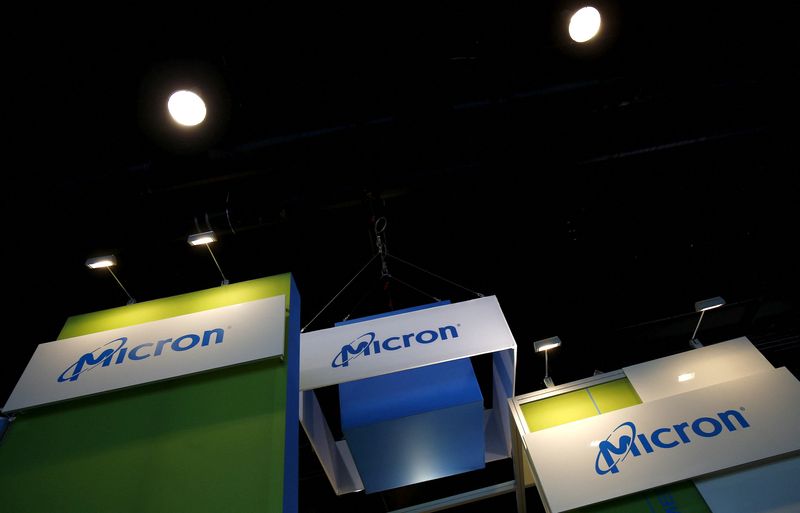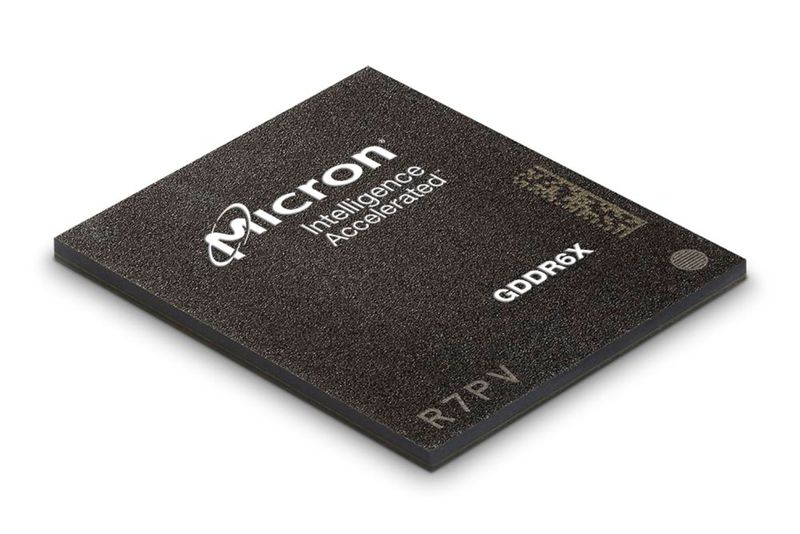By Chavi Mehta and Jane Lanhee Lee
(Reuters) -A significantly weaker than expected business outlook by memory-chip firm Micron Technology Inc (NASDAQ:MU) on Thursday raised concern that following nearly two years of strong demand the industry was turning toward a down cycle.
Micron forecast adjusted revenue for the current quarter at $7.2 billion, plus or minus $400 million, while Wall Street's outlook was an average of $9.05 billion, according to Refinitiv IBES data.
“We believe that demand has weakened considerably and we've seen that even in the areas that have been significantly constrained," Nikolay Todorov, analyst at Longbow Research, said. “Micron will essentially start or signal that the semiconductor cycle is turning.”
Shares of the Boise, Idaho-based company initially fell 6.3% in extended trading but later pared some losses. Summit Insights Group analyst Kinngai Chan said the stock was holding up as some investors see this as the bottom of the cycle. "We, however, believe there's more downside risk to earnings as our industry checks suggest possible further industry pricing pressure through 1H23," he said.
While Micron executives were confident about demand for their chips in the long term, they were hunkering down for a tough road ahead by cutting the amount of chips they make to ensure chip prices. While Micron did not provide any numbers, it said it will reduce spending on manufacturing of chips in fiscal year 2023 which starts in September.
"I think the extent of the shift has definitely been bigger than anyone was anticipating in the ecosystem," Micron's chief business officer, Sumit Sadana, told Reuters. "These changes are rippling through the ecosystem now."
Sadana said during the earnings call that China's lockdown is causing a 30% drop in Micron's China revenue for the current quarter, and a drop of 10% in total revenue.
The outlook for memory chip makers has worsened in recent months as surging inflation, China's cooling economy and the Russia-Ukraine war hit consumer spending on smartphones and personal computers, a crucial market for the industry. Sadana said the demand for that segment was worse than expected.
That has driven down chip prices and led to a buildup of inventories, with research firm TrendForce estimating a drop of 3% to 8% in prices of DRAM chips during the third quarter of 2022.
Sadana said Micron will hold a portion of chips it has already produced in the warehouse rather than releasing them to the market, and supplement any supply shortage that could occur as it cuts back chip production.
"We don't mind holding this inventory and it'll enable us to just drive better pricing discipline in the market," Sadana told Reuters.

DRAM chips - widely used in data centers, personal computers and other devices - account for two-thirds of Micron's revenue, and the company also makes NAND memory chips that serve the data storage market.
The company expects adjusted profit for the quarter of $1.63 per share, plus or minus 20 cents, compared with estimates of $2.57 per share.
